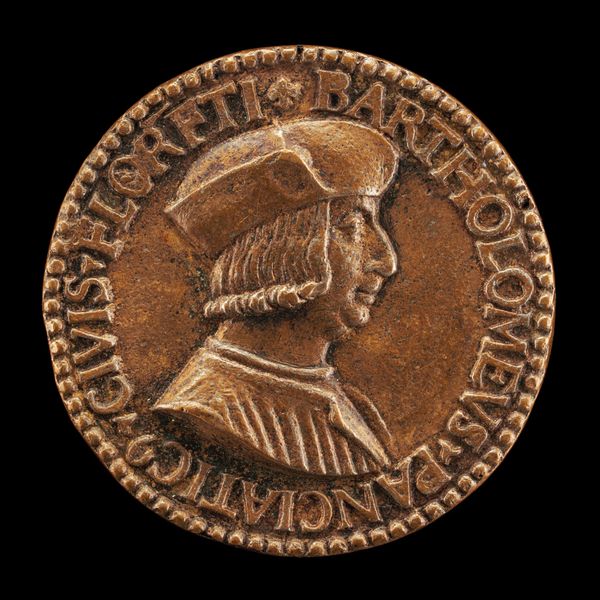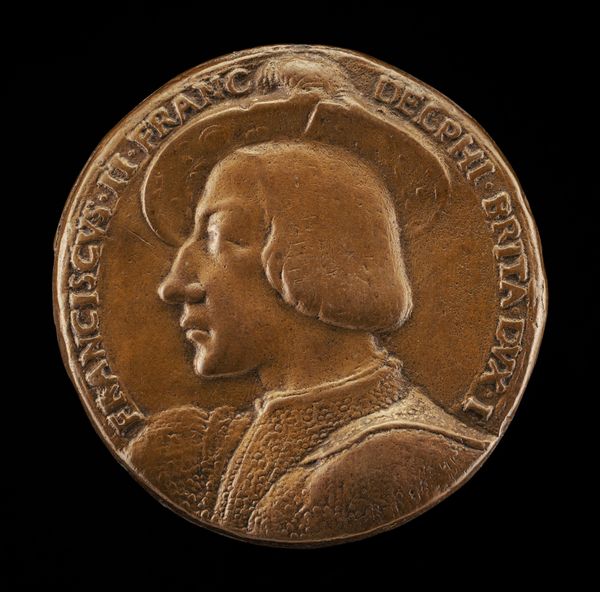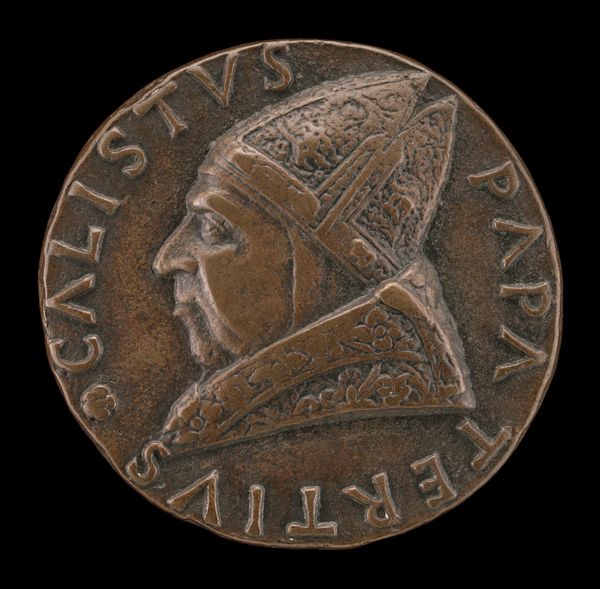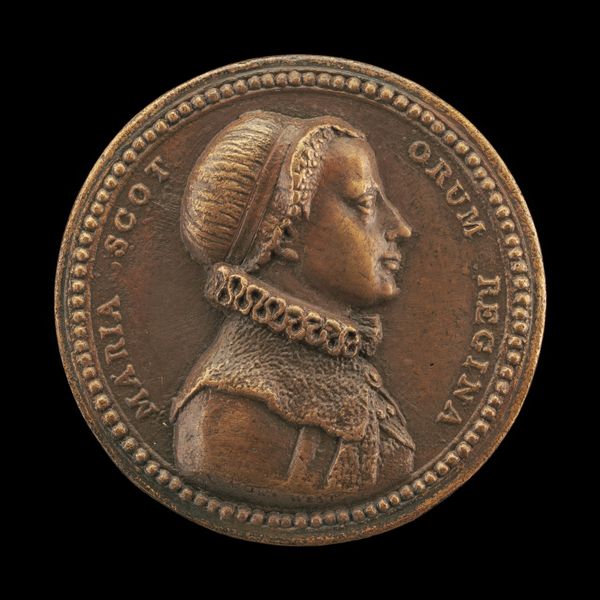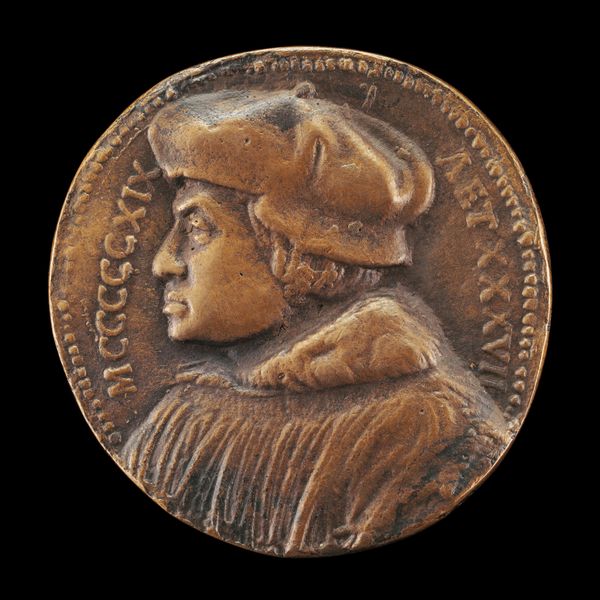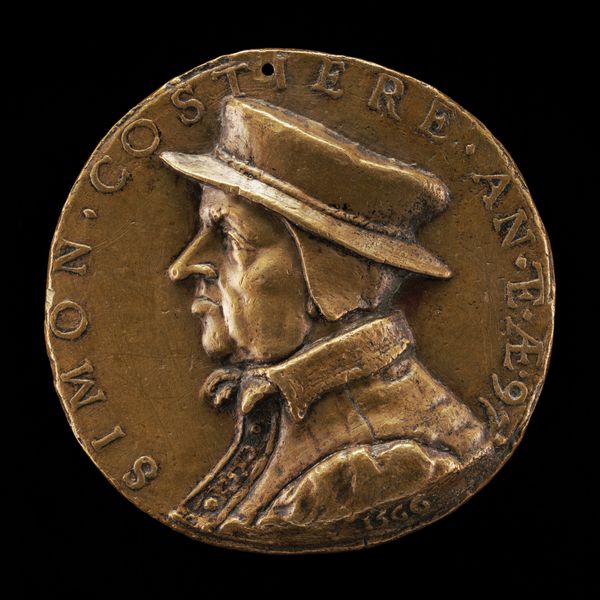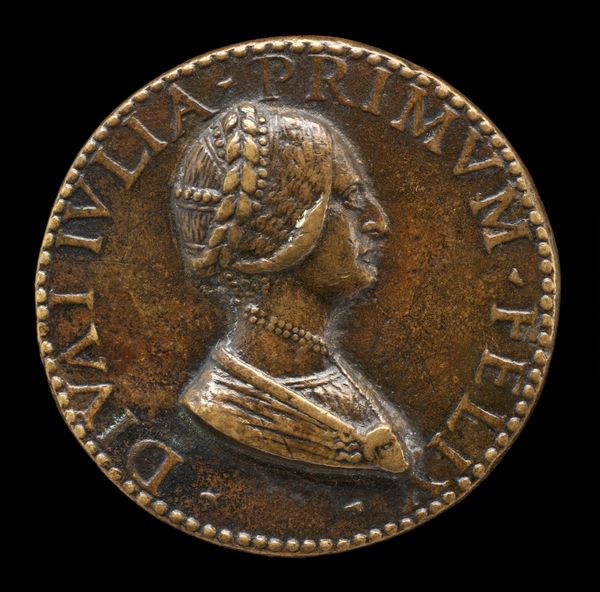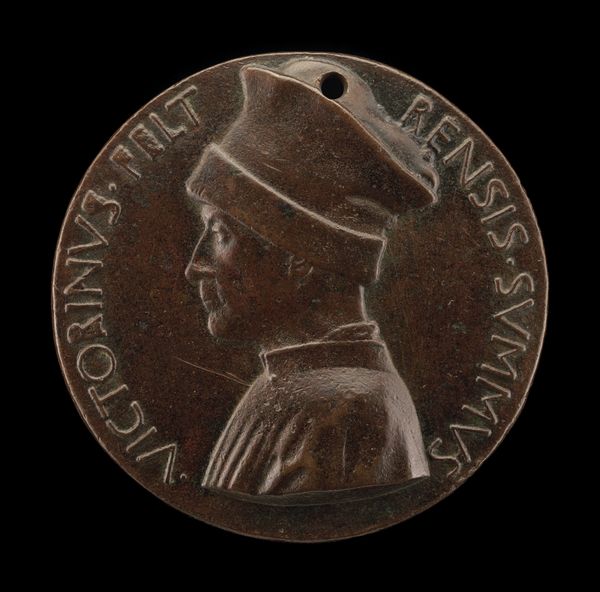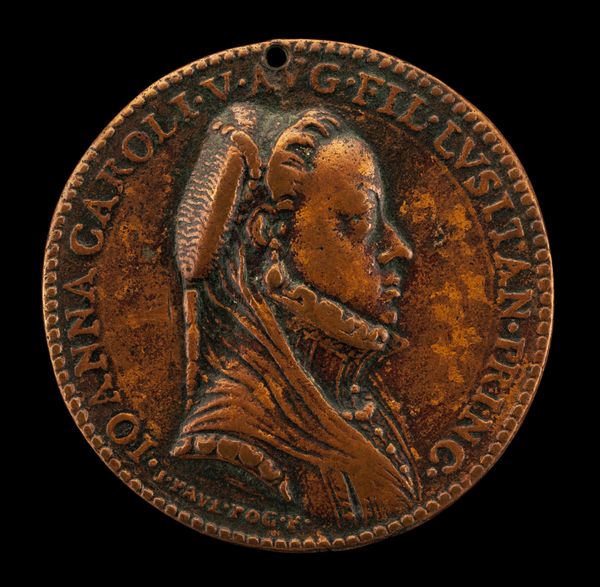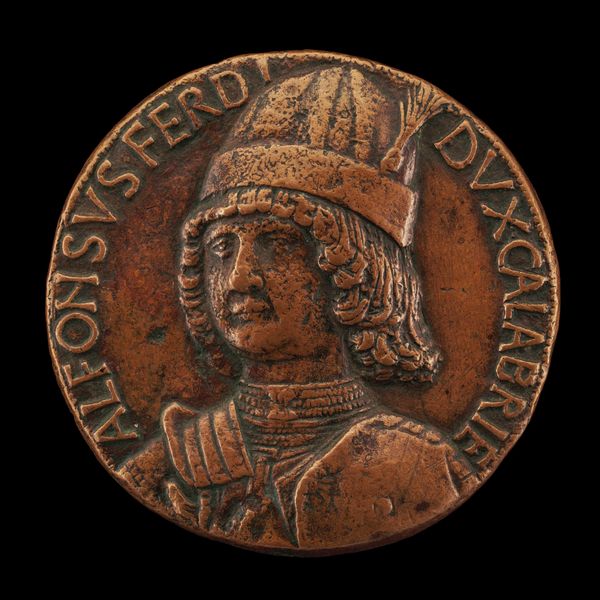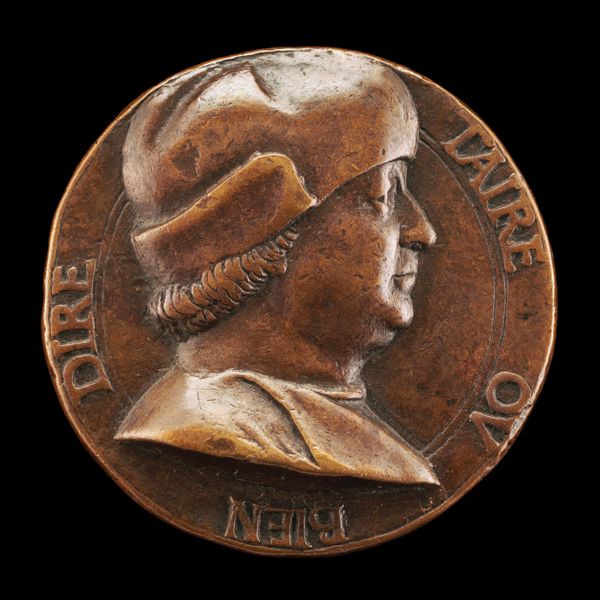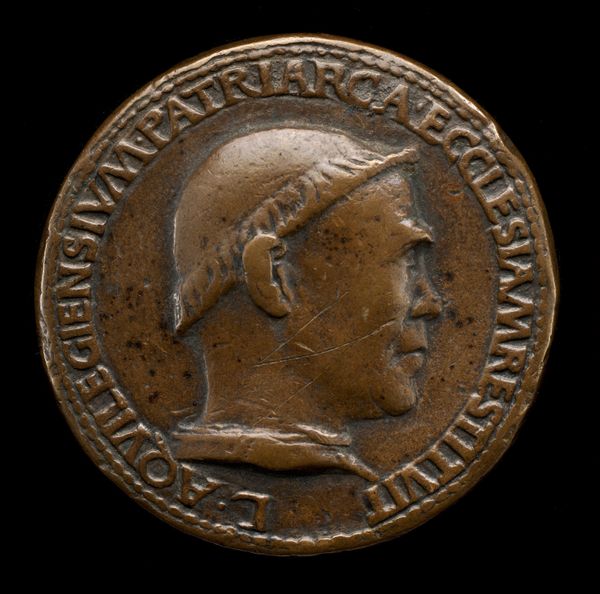![Jacques de Vitry-La Lière, died 1515, Canon, Dean, and Chancellor [obverse] by Medalist of 1518](/_next/image?url=https%3A%2F%2Fd2w8kbdekdi1gv.cloudfront.net%2FeyJidWNrZXQiOiAiYXJ0ZXJhLWltYWdlcy1idWNrZXQiLCAia2V5IjogImFydHdvcmtzL2JkMTQ4ZDY1LWIxYjUtNDA3YS04YTlmLTQ5ZWE0ZWQ0MjNmZS9iZDE0OGQ2NS1iMWI1LTQwN2EtOGE5Zi00OWVhNGVkNDIzZmVfZnVsbC5qcGciLCAiZWRpdHMiOiB7InJlc2l6ZSI6IHsid2lkdGgiOiAxOTIwLCAiaGVpZ2h0IjogMTkyMCwgImZpdCI6ICJpbnNpZGUifX19&w=3840&q=75)
Jacques de Vitry-La Lière, died 1515, Canon, Dean, and Chancellor [obverse] 1518
0:00
0:00
bronze, sculpture
#
portrait
#
medal
#
3d sculpting
#
sculpture
#
bronze
#
11_renaissance
#
sculpture
#
early-renaissance
Dimensions: overall (diameter): 4.9 cm (1 15/16 in.) gross weight: 39.86 gr (0.088 lb.) axis: 12:00
Copyright: National Gallery of Art: CC0 1.0
Editor: This striking bronze medal, portraying Jacques de Vitry-La Lière, was crafted by an anonymous medalist in 1518. There's a cool stillness to his gaze. What's particularly compelling to you about this piece? Curator: Considering it as a material object reveals so much. Look closely at the bronze itself. The mold-making process, the casting, the finishing - these aren't just technical steps, they're labor. Each mark is evidence of production. It speaks to workshops, apprentices, the economics of artistic creation in the Renaissance. Editor: So, the "who made it" is just as important as the "who is depicted"? Curator: Exactly. It pushes us beyond simply identifying a portrait to understanding the social context of its making. Was this commissioned, and if so, who paid for the labor and material? Consider also, why bronze? Bronze was valued for its durability and status. What message does that choice send? Editor: That connects to class and status...the act of preserving someone. Is there an established craft history with portraiture in bronze? Curator: Yes, definitely. The materiality connects this to ancient Roman traditions and thus to the Humanist fascination with antiquity in the Renaissance. Think about how the availability of certain materials—bronze here—might have influenced the direction of artistic trends. Without the material or resources it's hard to create a trend. Editor: That makes perfect sense. Focusing on materials offers a completely different lens for appreciation. Thank you. Curator: Indeed. By examining the bronze itself, we move from admiring a face to analyzing the entire system that made this image possible.
Comments
No comments
Be the first to comment and join the conversation on the ultimate creative platform.
